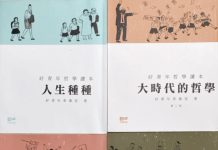Chan believes people should protest against such simplification but that taking such a stand against simplified Chinese would be superficial without a true understanding and passion for Chinese literature.
He hopes debate sparked by the road signs will make people aware of the issues involved and that the government will do more to preserve Hong Kong’s culture of using traditional Chinese.
Scholars of classical Chinese are not the only advocates of traditional characters; they are also preferred by graphic designers.
Edmond Lai specialises in designs based on re-creating Chinese characters. He draws his inspiration mostly from traditional characters, which he finds more structurally appealing and also more expressive.
“Traditional characters are derived from pictures and as such their meanings are easily comprehended,” Lai explains.
Lai views the meaning a character conveys as the most crucial principle for Chinese character graphic design. If a simplified Chinese character were more expressive, he would choose it over a traditional one. However, this is rarely the case.
Lai believes most simplified characters have lost their uniqueness and are not artistically appealing.
But while advocates of traditional Chinese characters see them as being the more authentic and “pure” form of written Chinese, others point out traditional characters are themselves simplified forms of earlier characters.
Cheung Kam-siu, assistant professor of the Department of Chinese Language and Literature at the CUHK, explains that the Chinese language system can be traced back to the Shang Dynasty, with the emergence of oracle bone script (jiaguwen). Since then, Chinese characters have undergone numerous stages of simplification.
The earliest Chinese characters were logographic, based on pictures. However, lines and marks began to replace pictograms after the Warring States Period. Seal script (zhuanshu) in the Qin Dynasty, which requires balanced forms and smooth lines, represents a breakthrough in Chinese character history.






































